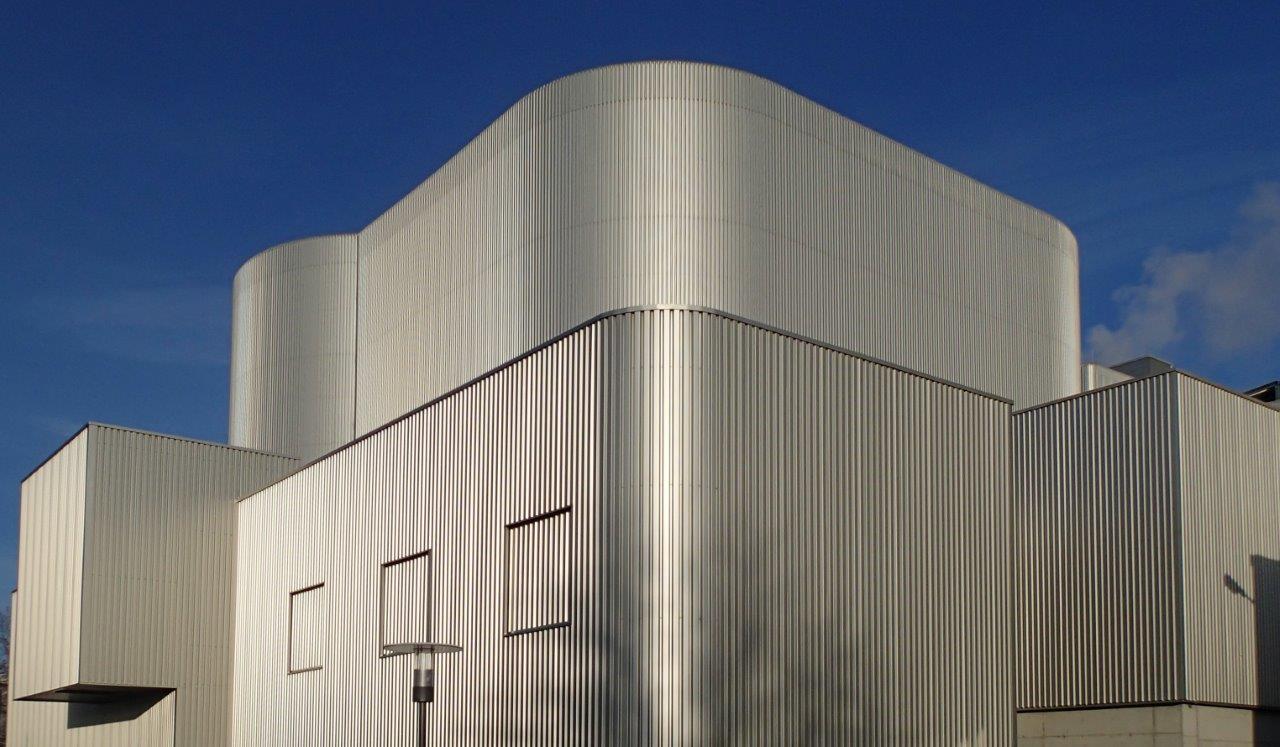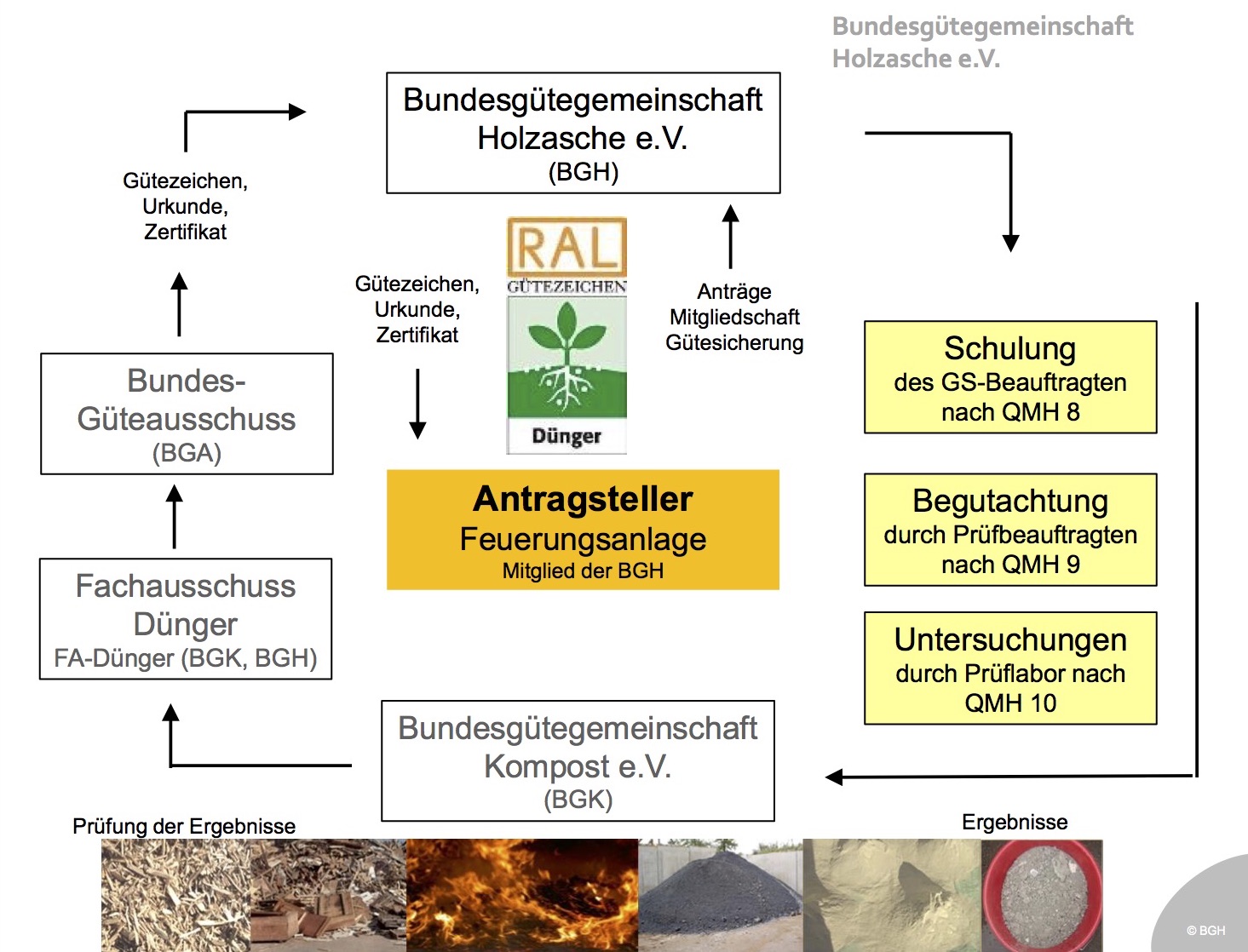Main navigation
How natural cycles can be closed with wood ash
Recycled material instead of waste: wood ash is good for soil and plants - if the quality is right. The German Federal Quality Association for Food Ash ensures reliable wood ash standards with its certifications. The RAL-Dünger label for fertilisers provides the necessary certification for natural wood ashes to be used in the circular economy.
What a waste: in the past, wood ash that accumulated during the energy recycling of residual wood, for example from forestry, simply ended up on normal landfills. On the one hand, this changed with the amendment of the German Landfill Ordinance in 2010. On the other hand, a look at the components of the ashes shows what a sacrilege this is. Dr. Rainer Schrägle is the managing director of Bundesgütegemeinschaft Holzasche e.V. (German Federal Quality Association for Wood Ash) and highlights three characteristics that make wood ash an excellent fertiliser and soil improver: "Wood ash contains active alkaline ingredients that counteract the acidification of soil. It also contains potassium, which plays a key role in the drought resistance of plants. And phosphorus in the form of phosphates is a traditional fertiliser that is becoming increasingly scarce." Phosphates are usually obtained from minerals such as apatite. However, phosphate deposits are shrinking worldwide and becoming increasingly poor in quality. Added to this is the environmental impact of phosphate mining. At the same time, the need for fertilisers and other phosphorus uses is increasing, which makes the element increasingly expensive. This is why phosphorus alone is making wood ash increasingly attractive in economic terms.
Recycling comes before disposal

Quality is of course also an issue for wood ash, as Schrägle, an agricultural engineer, knows only too well. Limiting harmful substances is an important aspect. "The ashes can be contaminated with heavy metals such as cadmium and chromium VI compounds. As regards cadmium, it comes down to, amongst other things, how high the bark content in the substrate is. As a rule of thumb: the more bark, the higher the cadmium content." In wood-fired power plants, the cadmium content can be controlled via process control, more precisely via the temperature in the fire bed. "Cadmium has a boiling point of just over 760 degrees, it evaporates above these temperatures and can thus be separated," says Schrägle. The content of chromium VI compounds can also be controlled with process technology. This works most easily for systems that use wet ash removal. "Here, the ash is removed in a wet state. In dry ash removal systems, substances such as iron compounds that reduce the humidity of the ash can be added; these convert chromium VI into non-toxic chromium III compounds. The legally required low limits for chromium VI in fertilisers can thus be adhered to," says Schrägle.

In addition to a low harmful substance content, a high nutrient content is crucial for the quality of wood ash when it is used as a fertiliser. There are also physical parameters that determine how well wood ash fertiliser can be applied to fields; grain size and moisture content play a role towards enabling dust-free application of the fertiliser. All these characteristics determine whether and how well wood ash is suited for use as a fertiliser. The Federal Quality Association for Wood Ash (BGH) has developed a detailed catalogue of requirements and test algorithms, which is used to certify wood ash. A quality assurance procedure was developed in cooperation with the Federal Quality Association for Compost, of which the BGH is a division. Wood ash manufacturers who have their products successfully tested are awarded the RAL-Dünger quality label. In addition to certification as a stand-alone fertiliser, wood ash can also be certified for use as a fertiliser component. "The requirements for harmful substance limits and nutrient values are the same for both processes; only the physical requirements do not currently have to be met as a component in these certifications," explains Schrägle.
It should be noted that only wood ash from the incineration of natural, untreated wood is certified. This usually comprises residual and waste materials that cannot be recycled. The largest share in terms of volume comes from forestry. Shredded branch scraps or bark beetle wood are suitable raw materials; but wood fractions, which accumulate when mowing embankments or in green waste collection points, are also possible. If the material ends up in energy recycling plants, for example in combined heat and power plants, these can increase their portfolio with the ashes. In addition to heat, or heat and electricity, the plants can produce wood ash as a further mainstay. One of the services offered by the Federal Quality Association for Wood Ash is to advise plant operators on process engineering issues and to provide support to help them get the best out of their substrates as far as wood ash is concerned.
Circular economy par excellence
The wood ash cycle closes when its nutrients promote new plant growth. Wood ash can do this as a stand-alone fertiliser, as a component in complex fertiliser mixtures or as an additive to compost. But wood ash is not only in demand for conventional fertiliser applications. It is also used to protect forest plants. Large-scale forest soil liming is intended to mitigate soil acidification, and wood ash is a suitable component of soil liming mixtures due to its alkaline active ingredients. Up to 30 percent ash from residual wood from the forest is permitted within the framework of soil liming. The wood ash is thus returned to forest areas.
The Material Wood and Plant Ash Recycling (Stoffliche Holz- und Pflanzenaschenverwertung, SAV) network was created to tap the full potential of material recycling. Under the auspices of the German Association for Bioenergy, the member companies are aiming to optimise the ash value chain. The focus is on innovative and economical solutions for wood ash separation and processing. The BGH is an associated member of the network and contributes its know-how.
The SAV network is funded by the German Federal Ministry of Economics as part of the ZIM programme (Zentrales Innovationsprogramm Mittelstand; Central Innovation Programme for SMEs). "Within the SAV network, we analyse, for example, whether it is useful to crush ash for liming purposes and the best method for doing so. And we are investigating whether it makes sense to produce fertilisers directly at power plants. Concepts for collecting ashes from small power plants are also on the agenda," says network manager Yvonne Bosch. Alternative uses such as the use of wood ash for soil stabilisation in road construction or for producing concrete are also being investigated. This ensures that ashes that cannot be certified as RAL-Dünger are also recycled sensibly.
About Bundesgütegemeinschaft Holzasche e.V. (BGH)
- Year founded: 2011
- Members include plant operators, processors, plant builders, energy suppliers, trade associations, laboratories and recycling plants.
- The central task of the BGH is to help wood ash to gain a RAL quality label.
- This includes plant inspections, courses, employee training and other advisory services (free of charge for members, otherwise for a fee).
- The BGH also participates in technical working groups in the circular economy and accompanies legislative processes.
- The BGH organises the European Wood Ash Conference. The conference takes place every two years; the next conference will take place in autumn 2021.
